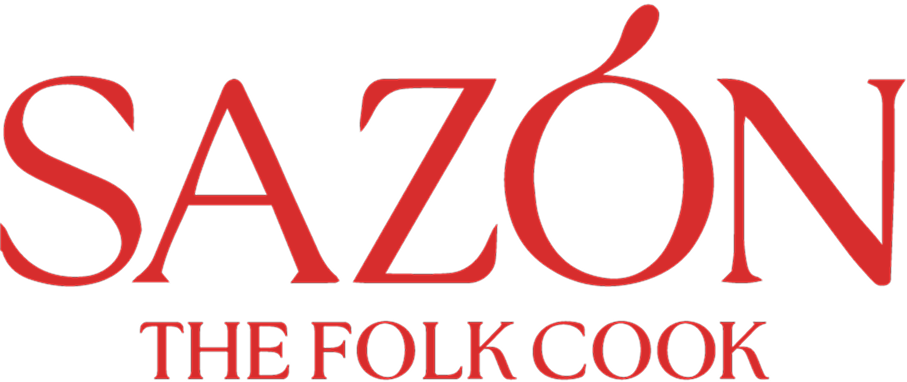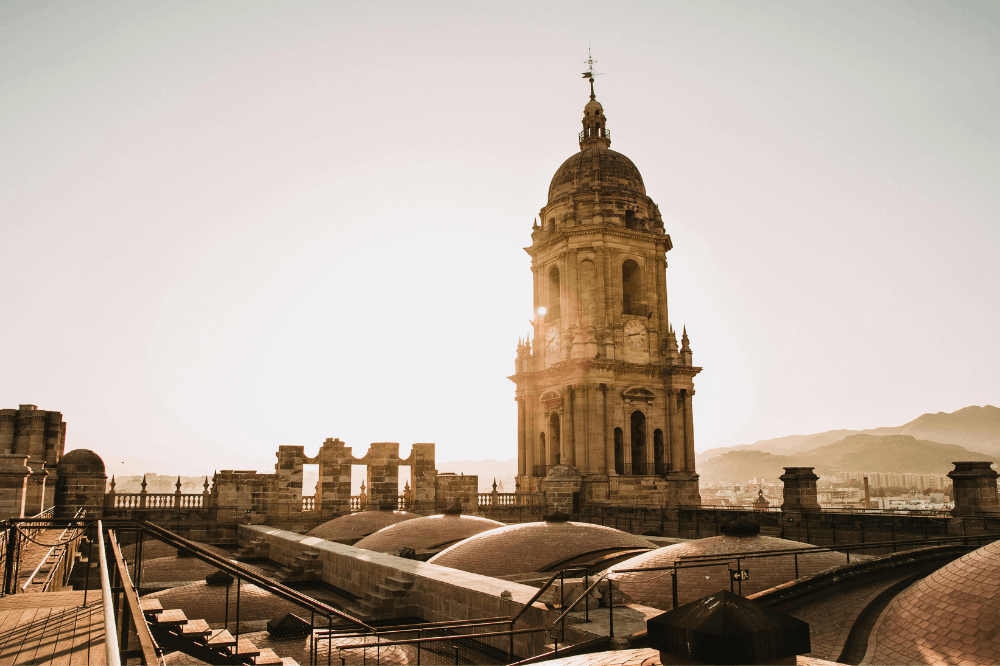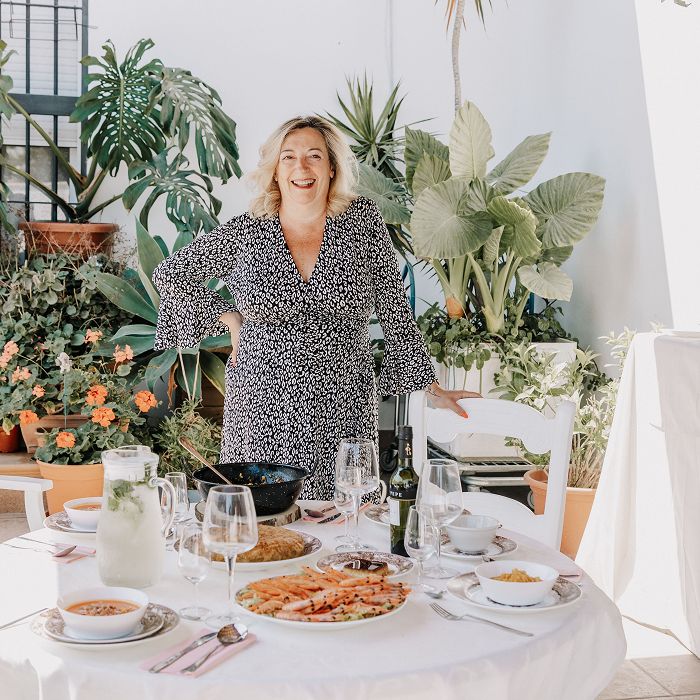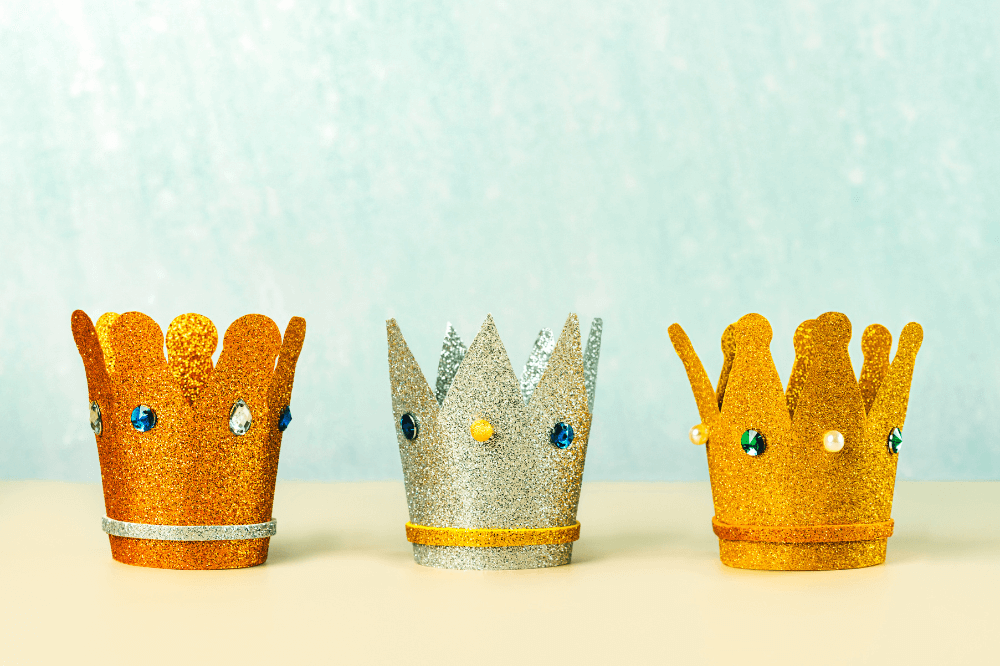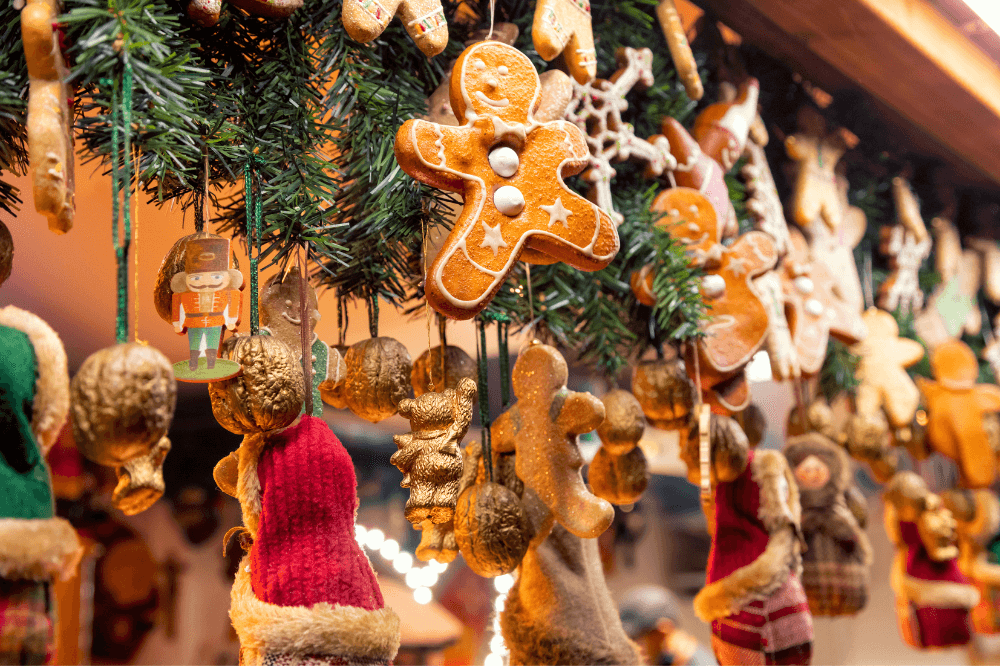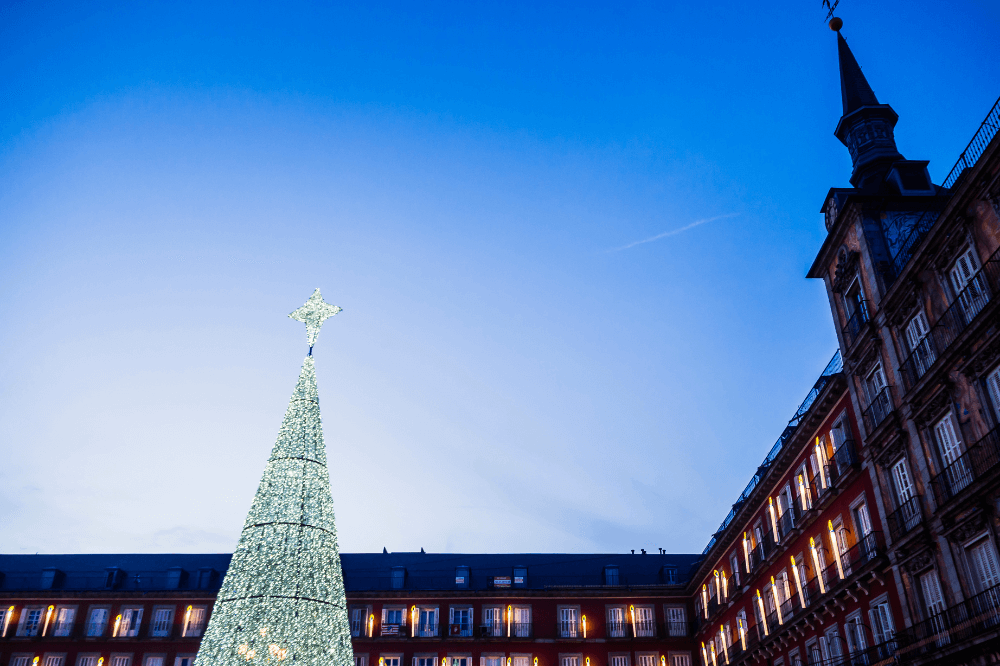In this article, we’ve gathered the most frequently asked questions tourists have about the Málaga Fair and answered them in a clear, direct, and practical way.
Our goal is to take the worries off your mind so you can get ready to experience one of the most vibrant and authentic festivals in Andalusia.
From the daytime festivities in Málaga’s historic center to the nighttime party at the Real fairgrounds, plus tips on food, dress, and transportation, you’ll find everything you need to make the most of your visit.
Get ready to dance, sing, and soak up Málaga’s magic stress-free!
Explore our experiences with local cooks in Málaga.
What is the Málaga Fair and why is it celebrated?
The Málaga Fair is, without question, the city’s biggest annual festival. It’s held every August to commemorate the Catholic Monarchs’ reconquest of Málaga in 1487.
The Fair has two main settings: by day, the party takes place in the Historic Center, with a more traditional, local vibe.
At night, the action moves to the Real del Cortijo de Torres, a massive fairground on the outskirts. There you’ll find the famous “casetas” (party tents), carnival rides, live music, and an all-out festive atmosphere.
When and where does the Málaga Fair take place?
It’s always in August.
The exact dates vary each year, but it traditionally starts on the second Friday of the month and runs for about eight or nine days, ending on a Saturday.

As for ¨where¨, the Fair is split into two main zones:
- Daytime Fair: Centered in Málaga’s Historic District. Streets like Calle Larios, Granada, and Especerías fill with people dancing, singing, and enjoying the traditional vibe, with flamenco and sevillanas everywhere.
- Nighttime Fair: Takes place at the Real del Cortijo de Torres, a huge purpose-built fairground outside the city center. Here you’ll find the casetas (hospitality tents with music and dancing), fairground rides, and an auditorium hosting concerts.
How do I get to the Fair?
Our top recommendation: skip the car if you can!
Traffic is heavy, and parking anywhere near the Center or the Real is almost impossible and very expensive.
Best options:
- Public Transportation (Buses): Málaga City Council runs special bus services connecting different parts of the city with the Real (for the Nighttime Fair) and the Center (for the Daytime Fair). They’re frequent, run until late, and are the easiest and cheapest way to get around. Look for “Feria Special Lines” on the EMT website.
- Taxis and Ride-Sharing: Always an option, of course. It’s pricier, but if you’re traveling in a group or want more comfort, it can be a good choice. Just keep in mind that at peak hours it can be hard to find a free one or there may be lines.
- Walking: If you’re staying near the Center, you can easily do the Daytime Fair on foot. You can walk to the Real if you’re not too far, but remember it’s a long, hot walk, not everyone’s idea of fun in August!
What should I expect from the Daytime and Nighttime Fairs? Are they very different?
Absolutely, they’re two sides of the same coin, and understanding the difference is key to planning your visit.
A lot of visitors are surprised by how distinct they are!
The Daytime Fair
During the day, the main streets turn into a giant street party. Locals dress up in flamenco dresses and traditional short suits, while flamenco and sevillanas music fills the air.
You’ll find:
- Dancing in the streets (anyone can join in!)
- Live music on nearly every corner
- Tons of tapas and drinks (Cartojal is king!)
- A super lively, family-friendly vibe, perfect for strolling, watching horse parades, and soaking up Málaga’s culture
Note: It’s HOT in August. Find shade, stay hydrated, and enjoy the sun at a relaxed pace.
The Nighttime Fair
When the sun goes down, the party moves to the Real del Cortijo de Torres on the outskirts.
This is a giant fairground packed with casetas, think bars with music and dance floors, many of which are free to enter.
At the Night Fair you’ll find:
- Casetas for every taste: from traditional flamenco and copla to pop, rock, and reggaeton
- A huge amusement area (nicknamed la Calle del Infierno), perfect for kids and adults alike
- An auditorium hosting big-name Spanish artists
- A vibrant, packed crowd of all ages enjoying the party late into the night
What should I wear? Do I have to dress in flamenco style?
Short answer: No, it’s absolutely not required to dress with flamenco style.
Most locals (and definitely most tourists) just wear their regular summer clothes.
That said, here are some practical tips:
- Comfort first: You’ll be walking a lot, dancing (probably), and standing for hours. August in Málaga is hot, so choose lightweight, breathable fabrics like cotton or linen. Think loose dresses, skirts, shorts, or comfortable pants.
- Practical shoes: Super important! Skip stilettos or uncomfortable shoes. Go for flat sandals, low wedges, or sneakers. Trust us, your feet will thank you at the end of the day.
- Sun protection: A hat, cap, or good sunglasses are nearly essential, especially if you’re hitting the Daytime Fair.
And of course, if you want to go all in and dress up in flamenco style, go for it! It’s part of the fun.
What do people eat and drink at the Fair?
When it comes to drinks, Cartojal is the undisputed star.
It’s a sweet Málaga wine served ice cold, super easy (sometimes too easy!) to drink. Look for the iconic pink bottles everywhere.
If you’re not big on sweet drinks, try a rebujito: a mix of manzanilla or fino sherry with soda (like Sprite or 7Up) over ice. It’s light, refreshing, and perfect for the heat.
You’ll also find all kinds of ice-cold beers.
For food, the Fair is a great opportunity to sample Málaga and Andalusian flavors in a festive setting:
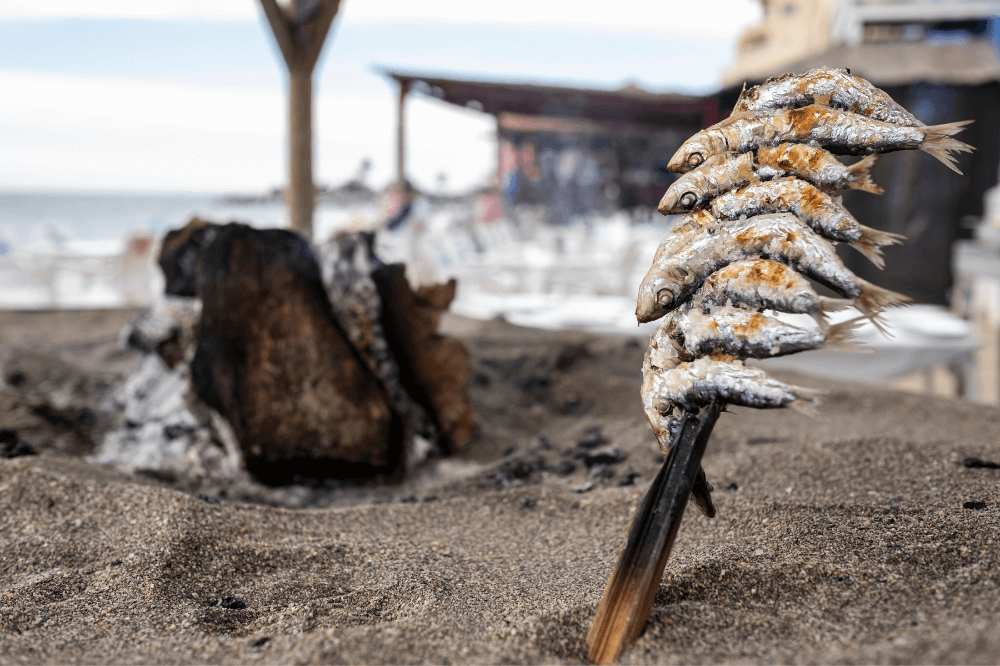
- Espetos de sardinas: More typical at beach bars, but you might find them here too, sardines skewered on sticks and grilled over wood fire. Simple and authentic.
- Fritura malagueña: Assorted fried fish (anchovies, calamari, tiny whitebait…). Always a winner.
- Tapas and platters: In the casetas and bars downtown you’ll find endless options: ham, cheese, croquettes, Moorish skewers, Russian salad, you name it.
- Paella: Big paellas cooked on-site are common, especially in some casetas.
Our tip: Just go with the flow and try a little of everything.
The best dinner at the Baños del Carmen.
Are there activities for kids?
Absolutely!
If you’re traveling with family, the Málaga Fair is designed to include little ones, just in different ways depending on day or night.
At the Daytime Fair
During the day, the atmosphere in the center is more about strolling and enjoying the music.
It’s great for children to see the horses and carriages parading and soak up the color and joy of the festival.
Although there are no specific attractions, simply watching people dance sevillanas or listening to flamenco is a very enjoyable cultural experience for them.
However, the heat can be intense, so seek shade and take frequent breaks.
At the Nighttime Fair (Real del Cortijo de Torres)

This is where kids find their own special paradise:
- “La Calle del Infierno” (Hell Street): That’s the popular name for the fairground’s ride zone. It’s packed with attractions for all ages, from gentle carousels for the little ones to roller coasters and high-adrenaline rides for older kids. They can spend hours here.
- Game and candy stalls: Beyond the rides, there are tons of game booths where kids can try their luck (darts, aim challenges, etc.) and win prizes, plus stands selling cotton candy, churros, waffles, and other sweet treats they’ll love.
- Family-friendly casetas: Many of the casetas (party tents) have a very family-friendly vibe, especially earlier in the evening before things get really busy. They usually have space to sit down and grab some dinner.
Important tip: The Nighttime Fair gets extremely crowded.
If you’re going with kids, try to go early in the evening (around 8–9 pm) when it’s less packed, and always set a clear meeting point in case you get separated.
And of course, stay well hydrated!
Is it safe? Is it really crowded?
The Málaga Fair is generally very safe.
Local authorities (National Police, City Police) and emergency services (firefighters, medics) deploy a large, highly visible security operation to keep everyone safe.
You’ll see a constant police presence, especially in the busiest areas.
Now, for the second part of your question: yes, it gets very crowded. The Fair draws millions of people each year, both locals and visitors.
To help you have the best (and safest) experience possible, here are our tips:
- Always keep a close eye on your belongings.
- Stay well hydrated and take breaks. The heat and crowds can really wear you out.
- If you’re with a group, set a clear meeting spot in case you get separated. Cell service can be spotty in crowded areas.
- If you see anything suspicious or need help, don’t hesitate to approach any police officer or security staff.
Should I bring cash or can I pay by card?
At the Fair, just like in many places these days, card payments are increasingly accepted. But we still recommend carrying some cash with you.
That way, you can avoid any hassles or having to hunt down an ATM (which will likely be pretty busy).
Ideally, use your card whenever you can, but keep a small cash cushion on hand.
Having around €20–50 in small bills and coins should be enough to cover any unexpected expenses so you don’t miss out on anything for lack of cash.
What are the must-see events at the Fair?
There’s always something going on at the Fair, but these highlights are the true soul of the celebration.
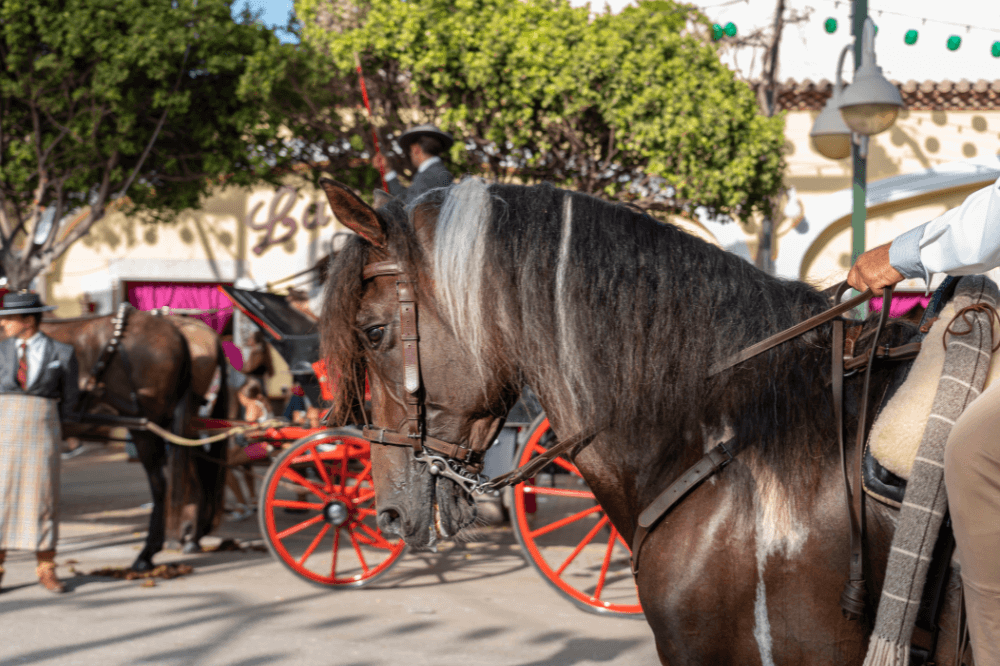
Don’t miss them if you can!
- The Opening Speech and Fireworks: The Fair officially kicks off with the “pregón,” an opening address by a prominent local figure. Immediately afterward comes a spectacular fireworks show from the Malagueta Beach area.
- The Romería (Saturday Morning): The first Saturday of the Fair features this traditional pilgrimage La Romería. Decorated wagons, horseback riders, and people in flamenco dress head to the Santuario de la Victoria to offer flowers to the Virgin.
- Lighting of the Real (Saturday Night): While not as big as the fireworks, the moment they switch on thousands of lights decorating the Real’s main entrance and streets is magical. It’s usually on the first Saturday night and marks the start of the full-on Night Fair.
Enjoy Your Visit Even More with Sazón The Folk Cook
We hope this guide has answered all your questions and left you excited to experience the Málaga Fair.
But do you know how you can take your Málaga adventure to the next level and discover the region’s most authentic flavors?
If you’re curious about local cuisine and want to go beyond just Fair tapas, we have something truly special for you: book a private culinary experience in the home of a local chef in Málaga.
Dare to discover the most delicious, personal side of Málaga. Click here to reserve your experience with a local cook and take home unforgettable memories (and a few new recipes!).
